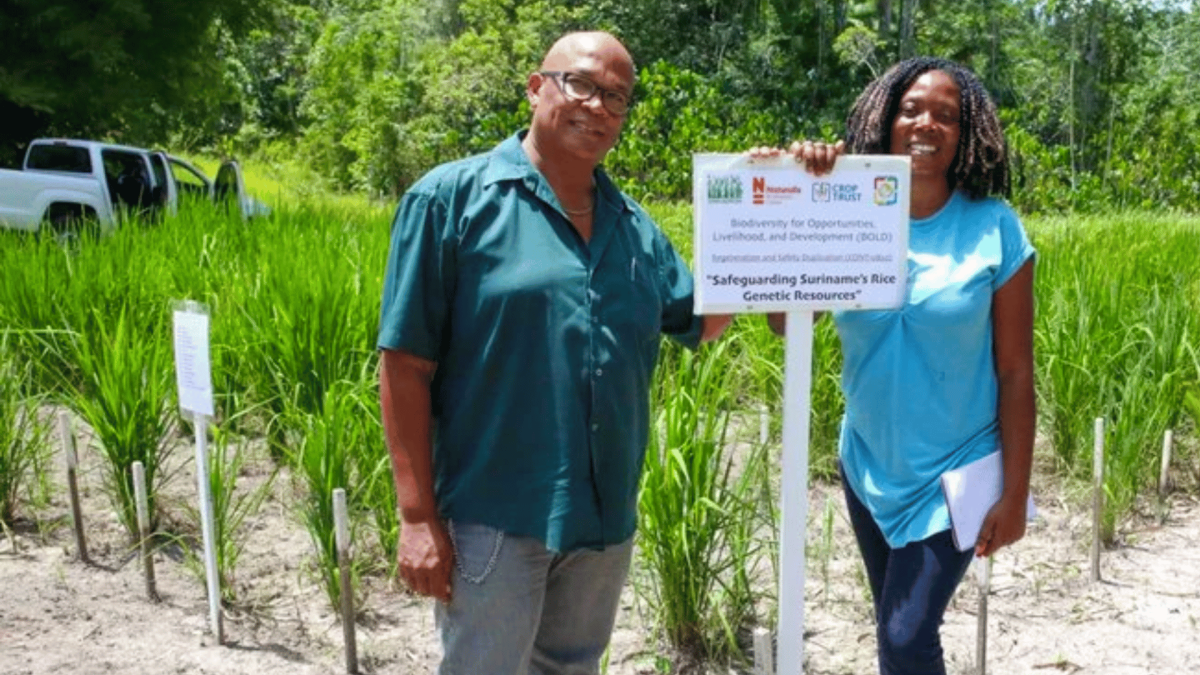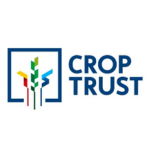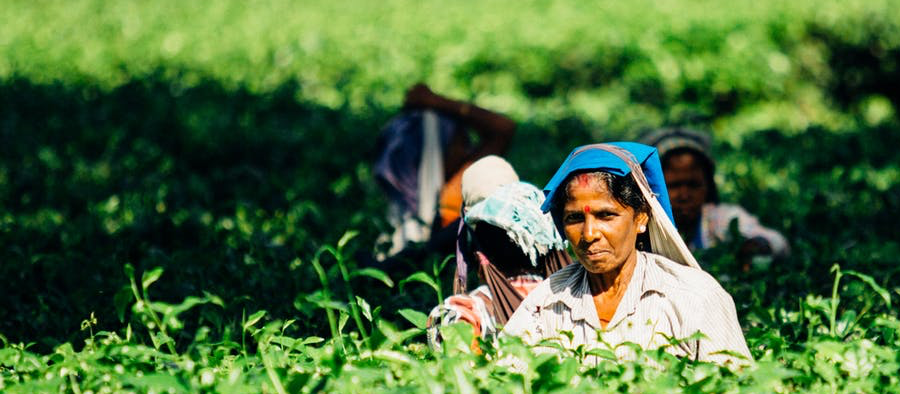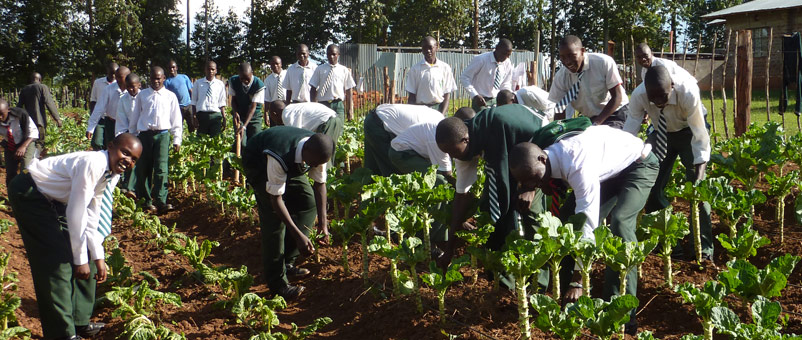Jerry Tjoe Awie is a rice breeder. The only one in Suriname, a small country on the northeastern coast of South America. Jerry is also the Director of the Anne van Dijk Rice Research Centre (ADRON), Suriname’s national rice research institute. Supported by the Crop Trust, he leads a project that aims to make sure the country’s rice diversity remains alive and available, forever, no matter what.
In gene banks, this is known as safety duplication. Safety duplication starts with multiplication, which ensures there is enough seed of all the different available varieties to store in a couple of different places and to use in breeding efforts and for sharing with farmers. ADRON’s safety duplication effort is funded by the Crop Trust’s BOLD (Biodiversity for Opportunities, Livelihoods, and Development) project, a 10-year, global undertaking that is strengthening genebanks around the world.
ADRON is one of 43 BOLD partners in 30 countries that will safeguard copies of their crop diversity in the Svalbard Global Seed Vault. But ADRON is different from most partners. Firstly, it focuses on a single crop. Secondly, and more importantly, it is working closely with local communities. ADRON and Surinamese Maroon communities, the descendants of enslaved people, are together safeguarding ‘hinterland rice’, rice that has been a part of Maroon communities’ lives for 300 years. This past September, a Crop Trust team travelled to Suriname to see first-hand the progress Jerry and his collaborators have made thus far. On the last day of the visit, Jerry kindly agreed to answer a few questions.
Crop Trust (CT): What is the role of rice in your country?
Jerry Tjoe Awie (JTA): Rice is our staple food. Everyone eats rice every day. It is also our major agricultural export product. Rice is very important to us – not only in keeping people fed but also economically.
CT: What challenges are Surinamese rice farmers facing right now?
JTA: Climate change is here. We already see it here. We have diseases and weeds that we didn’t have before, or we had them, but they were not a problem. Now they are. Now the pesticides commonly used are not effective. So, we must look at new diversity and search for new sources of resistance or tolerance to certain diseases.
New sources of tolerance or resistance can be found in the tremendous diversity of the crop. The international gene bank at the International Rice Research Institute (IRRI) in the Philippines holds more than 132,000 accessions. But Jerry might find promising rice diversity in his own country, in rice that has been saved and used for the past three centuries by the Maroons of Suriname. Maroons are the descendants of former slaves that – between the mid-seventeenth and late eighteenth centuries – escaped the harsh realities of plantation life in the coastal areas and made a home for themselves in the remote forested interior of the country.
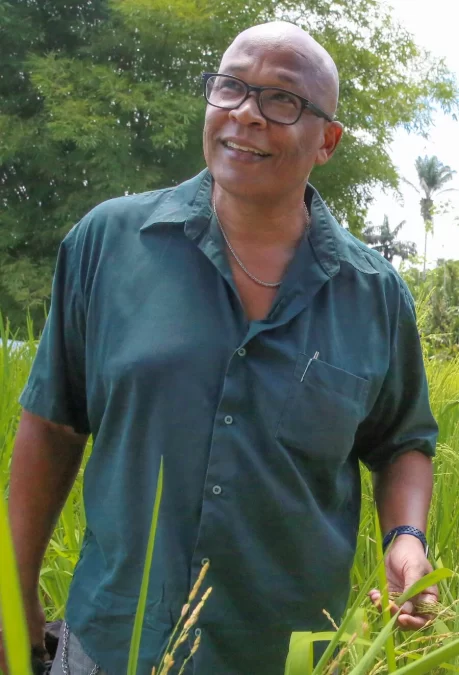
Maroons do not grow rice in large, flat, perfectly defined irrigated plots as the big companies do in the Surinamese coastlands. They grow rain-fed rice, sometimes mixed with other crops, such as cassava, for family consumption in small uneven plots of land hacked out of the tropical rainforest. This diversity had not been explored by Jerry and ADRON until Nicholaas Pinas, a PhD candidate studying the ethnobotany of rice varieties in Maroon communities at Naturalis Biodiversity Center and the Wageningen University and Research in the Netherlands, came into the picture. For the past two and a half years, Nicholaas has been collecting Maroon rice and sharing seed samples with Jerry. Though Jerry welcomed the diversity, he at first did not know what to do with it besides storing it in his gene bank.
JTA: At the research centre, we mostly focus on the coastal plain of the country. The Maroon varieties are mainly planted in the upland forests and we did not really have infrastructure there, but through BOLD, we have been able to forge new cooperations with people in the interior and with local communities.
And this material is very promising. In the multiplication fields, we are seeing some accessions that are affected by nothing, while others – even a small fungus on it and it is gone. Yeah, I have already seen some good sources of resistance to pests and diseases.
Exploring this diversity will take time. Nicholaas is already hard at work publishing papers in peer-reviewed scientific journals, but what cannot wait is ensuring this diversity is safe at ADRON and backed up elsewhere. Yes, the Marrons have successfully conserved their rice for 300 years and they may very well continue to do so for the next 300. But then again, maybe not.
Change is inevitable. Even in the remote hinterlands of Suriname. Younger generations of Maroons are leaving their rural homes, leaving the farms, searching for other ways to make a living. But not all of them. Some of them attended the workshop Jerry hosted at ADRON to learn more about the Crop Trust and crop diversity as well as what Jerry and his staff are doing with rice.
Jerry shared several videos illustrating the rice breeding process, how planting is done, irrigation and more. The response was more than positive. “It was evident that they gained valuable knowledge and were captivated by the informative videos,” remarked Beri Bonglim Tambam, the Crop Trust scientist overseeing the safety duplication component of BOLD.
The workshop ended with the Maroon women intoning a breathtaking call-and-response song that one of its members made up on the spot. It was about rice. The silence that remained once the Maroon delegation left weighed on everybody. The afternoon sun shone bright in the cloudless sky. Jerry stood in front of the multiplication plots located across from the ADRON headquarters and continued answering our questions.
Climate change is here. We already see it here. We have diseases and weeds that we didn’t have before, or we had them, but they were not a problem. Now they are…So, we must look at new diversity, and search for new sources of resistance or tolerance to certain diseases.
Jerry Tjoe Awie, Director of the Anne van Dijk Rice Research Centre (ADRON)
CT: Tell us a little about what we are seeing in this plot – what is your overall goal in this project?
JTA: What we see here are more or less 500 germplasm accessions, mainly upland varieties. Also some high yielding varieties that we developed ourselves. The purpose of this multiplication is that we store safety duplicates in the Global Svalbard Seed Vault and also in the United States Department of Agriculture’s gene bank.
CT: For you, what has been the most gratifying part of the project?
JTA: Seeing all of these accessions together. The diversity – I know it is there, but I have never seen so much of it in one field. That has been truly gratifying. I come in the afternoons when everyone is gone, and I just walk and look at the plants.
Two days earlier, Jerry had organised a gathering between the Crop Trust team and the Maroon community at Brokopondo, located in the interior of the country, where another of the project’s multiplication plots is located. Albertina Adjako, a Maroon farmer and Regional Coordinator at the Ministry of Regional Development, owns the 300 square meters plot where 75 types of rice stand tall and sway in the breeze.
During the event, Granman Albert Aboikoni, Paramount Chief of Samaaka Maroon extended his gratitude for the support provided by ADRON and the Crop Trust, and talked about some of the challenges the community is facing, including the lack of financial resources and technical assistance; he also made a plea for continued support, proposing the establishment of a community seed bank to better serve local farmers.
The last intervention of the day was by Beri, who, on behalf of the Crop Trust, handed over farming equipment that was purchased by the project to support the farmers. Once the official activities came to an end, the local community representatives – mostly women – started exploring the plot. In duos, trios and bigger groups, they walked around and through the rows of rice, smiling, talking amongst themselves, taking notes and biting into the grain. They were happy to see varieties that they knew and curious about those that were new to them.
CT: How did it make you feel to see all these women looking at the diversity in the regeneration plots?
JTA: Satisfying, really. I know that rice in these communities is the women’s job; the men just clear the field and then everything from then on is done by the women. It was nice to see them discussing among themselves the diversity in the plot.
Under this BOLD collaboration, we are asking them now to select five accessions, which we will multiply and provide seed to them. Some already came to me saying, “I like this one, I like that one”. Some want 20 accessions! It’s exciting to see such a positive response.
This Q&A was initially published on Crop Trust and has been revised to suit Farming First’s editorial guidelines.
